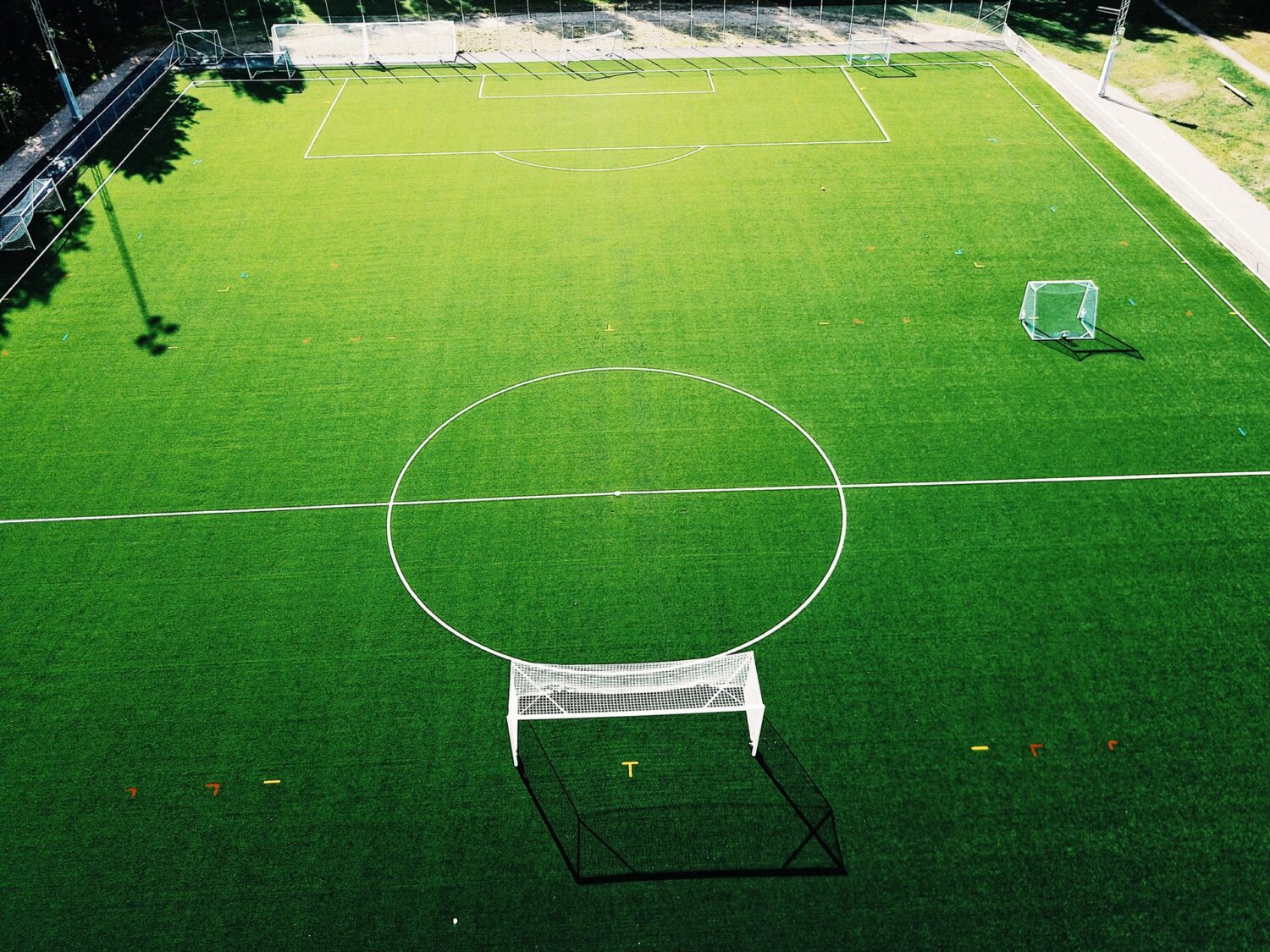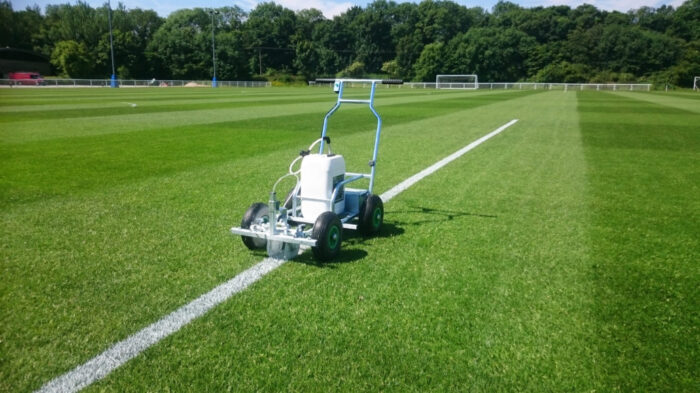The simple answer is no. Football is a universal game. It has so many variations depending on the level at which the game is being played which will greatly impact the dimensions of the pitch.
It is important for anyone involved in running a sports facility to be aware of these differences to ensure they provide the right environment for the players to train their skills. Even as a fan you can benefit from this information as you better understand why pitches differ in size and why your favourite team plays on a field with a different size compared to other teams.
How long is a football field?

Source: unspalsh.com
There is no easy answer as to how long a football field should be. The dimensions will vary based on the format and age group of the game, as well as with the regulations of the governing body the club refers to. For this article we will look at the regulations established by the Football Association.
Depending on the age of the players, they are allowed to join different age groups. The reason behind this is that each age group focuses on developing different skills. Some type of trainings could be too difficult for younger ages, while others need to be more complex to keep the games competitive at older ages. This will ultimately impact the surface the players need to cover. The younger the child, the smaller body they have and the more difficult it would be to cover a wider space.
So how long is a football pitch? These are the recommended sizes by FA, that can guide you to create age-appropriate football pitches.
-
5-a-side pitch Football pitch dimensions
5-a-side pitch is recommended for age groups under-7s and under-8s. According to FA, the 5-a-side football pitch is supposed to be 36.5m in length and 27.5m in width. A key characteristic of this type of pitch is its penalty areas, which compared to the more traditional rectangular boxes we see in the 11-a-side pitches, for these small pitches they are actually semi-circles.
-
7-a-side pitch Football pitch dimensions
The 7-a-side is a bit bigger, as naturally it needs to fit four more players. Also, this type of pitch is recommended for older kids, in the under-9s and under-10s. The dimensions recommended by FA for the 7-a-side pitches is 54.86m long and 36.6m wide.
-
9-a-side Football pitch dimensions
The 9-a-side football pitches are designed for players under-11s and under-12s and they need to accommodate 18 players. According to FA regulations, a 9-aside football pitch should be 73.1m long by 45.72m wide.
-
11-a-side Football pitch dimensions
Now we move into the adult professional game. The dimensions of 11-a-side football pitches must fall between 90-120m long and 45-90 m wide.
As you can see, football pitches are not all the same size. Their dimension differs based on the players’ group age. However, an interesting fact you might not be familiar with is that even the pitches for professional clubs are not all the same size.
For the 11-a-side, there are no fixed numbers here, but more of range, which determines the minimum and maximum requirements for the pitch.
These regulations allow for some flexibility with regards to the pitch size and give professional clubs the chance to adapt their pitch to their team’s specific play style.
For example, those teams that have a long-ball style of football would benefit more from a longer pitch, because it would give their wingers more space to push their attacks. For a defensive play style on the other hand, a smaller pitch would be more suitable. Players will have to protect a smaller area and can more easily control the situation, inhibiting their opponents’ scoring trials. This might be able to explain why your favourite team seems to shine when playing a home match and has a rough time playing an away match. It is important for coaches and players to be aware of how the pitch itself impacts their game style and be able to adapt their match strategy accordingly.
Can a football pitch be square?

Source: unsplash.com
Short answer is no. A football pitch cannot be square. The laws of the game state that the pitch should be longer than they are wide, with the touch line being longer than the goal line. However, this means that in theory, it is possible for a football pitch to have 91m long touch lines with 89m goal lines, which would make the pitch look as if it is almost square.
Of course, most clubs will aim to create pitches with dimensions as close as possible to the international standards. This way they ensure a consistent experience both for players and spectators.
How to mark a football pitch

Source: turfmatters.co.uk
Now that you understand the different sizes of football pitches, the next question you should ask yourself is how to actually create the lines for the game.
This job is traditionally done manually, with a group of groundspeople measuring the game area, laying down strings to figure out the correct place of the lines and then pushing a line marking machine which sprays paint along those strings. This manual job is very time consuming and inaccurate. The human error could lead to the lines being crooked and shifting their correct position. That means that even without even realizing it, your pitch might brake the regulations of the appropriate governing body.
Learn more about our robot here: turftank.com
The latest technology in the field is the Turf Tank, a line marking robot which automates the process and marks the pitches all by itself. Since it doesn’t require a manual operator, it is a more efficient tool compared to the more traditional, manual alternatives. The robotic field painter is controlled with a smart tablet and functions with GPS-technology, thus ensuring the lines are marked with precision every time. It can mark football pitches of different dimensions, ensuring the lines are always in the right place and following the Football Association regulations.
Another thing to keep in mind is that practice pitches could differ from game pitches. Coaches might want to customize the pitch to help their players develop their skills, such as changing box sizes, adding gridlines or even extra goals. The robot can easily be programmed to create all these new additions, create custom dimensions according to the specific needs of your club.
Now that you are familiar with the different dimensions of football pitches related to their group age, according to the FA regulations, as well as understanding the tools needed to mark football pitches you can take better decisions and build the perfect pitch for your club.
